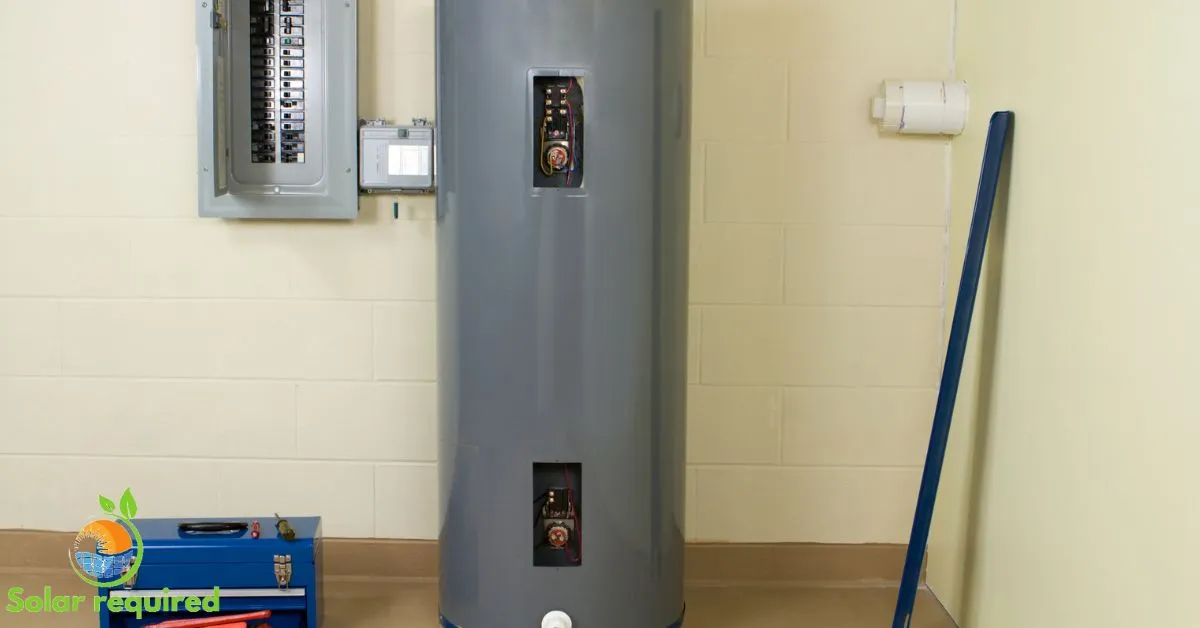Using renewable energy is more critical now. Energy costs are rising, and we must be more environmentally responsible. In this green revolution, solar power has emerged as a leader. This is due to its abundance and sustainability. Apart from solar water heaters, you can heat water in many ways.
Solar water heating is one of its many uses. But, among them all, it is a cheap green way to meet your hot water needs. It also reduces your reliance on fossil fuels. This detailed manual will cover the benefits of solar water heaters.
It will also examine the many models and technologies available. It will guide you through the installation procedure and answer common questions. By the end, you’ll know enough to decide for yourself. You’ll know whether to use this new tech and get all its benefits.
Types of Solar Water Heaters
Solar water heating has several system types. Each has its unique features and benefits. Understanding the various options can help you select the best fit for your home and hot water needs.
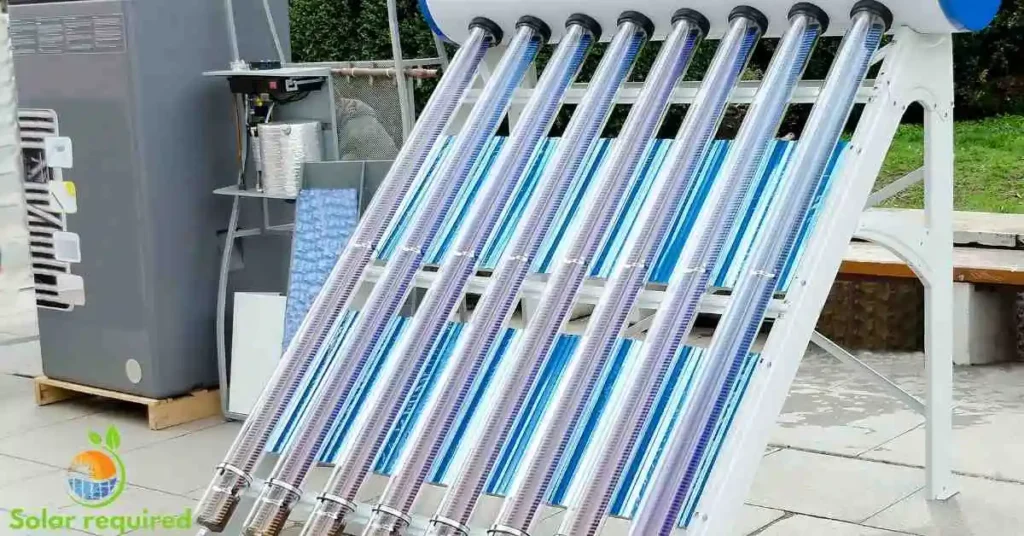
Active Solar Water Heating Systems
Active solar water heaters use electric pumps or solar-powered pumps. Read more about why choose solar pumps. They move water or heat transfer fluid between the solar collectors and the storage tank. These systems can be further divided into two subcategories:
Direct (Open-Loop) Systems
These systems use the household’s main water supply. They use it to directly heat the water in the solar collectors.
They’re more suitable for mild climates where there is little risk of freezing.
Maintenance is easy. The system only needs to be drained in very cold weather.
Indirect (Closed-Loop) Systems
- These systems use a heat transfer fluid, such as a water-antifreeze mixture, to flow through the solar collectors. Then, they exchange heat with the household’s water supply.
- They are better for cold climates. The fluid does not freeze.
- Passive solar water heating systems rely on natural circulation and heat absorption. They do not use pumps or other machines. These systems are further divided into two main types:
Thermosiphon Systems
In a thermosiphon system, the solar collectors are below the storage tank. This allows hot water to naturally rise and flow through the system.
The tank is usually installed above the solar collectors. It uses the natural convection process.
Thermosiphon systems are known for their simplicity and reliability, as they have no moving parts.
Batch (Integral Collector-Storage) Systems
Batch systems combine the solar collector and storage tank into a single unit. It is usually a dark insulated tank placed in direct sunlight.
As the water in the tank is heated by the sun, it naturally circulates through the household’s hot water distribution system.
Batch systems work well in places with consistent, intense sunlight and mild climates. They lack freeze protection.
Hybrid solar water heaters combine solar tech with a traditional water heater. The heater is typically gas or electric. These systems are designed to maximize solar energy use. They also provide backup heating when needed.
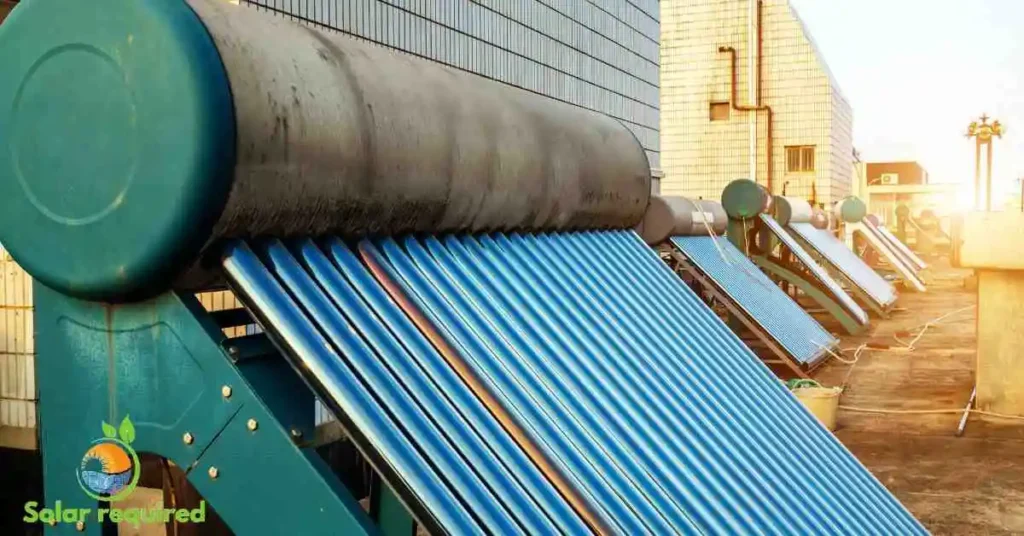
Key features of solar water heating
Dual-Tank Configuration:
The system has a solar storage tank and a backup water heater tank. It allows seamless use of solar and traditional heating.
Automatic Switching
The system switches between solar heating and the backup heater. This ensures a steady supply of hot water. It works even on cloudy days or when demand is high.
Increased Efficiency
Hybrid systems use both solar and traditional heating. They are more efficient and cheaper than standalone solar or traditional water heaters.
Flexibility
Hybrid systems can adapt to changing hot water needs. They can be tailored to specific households.
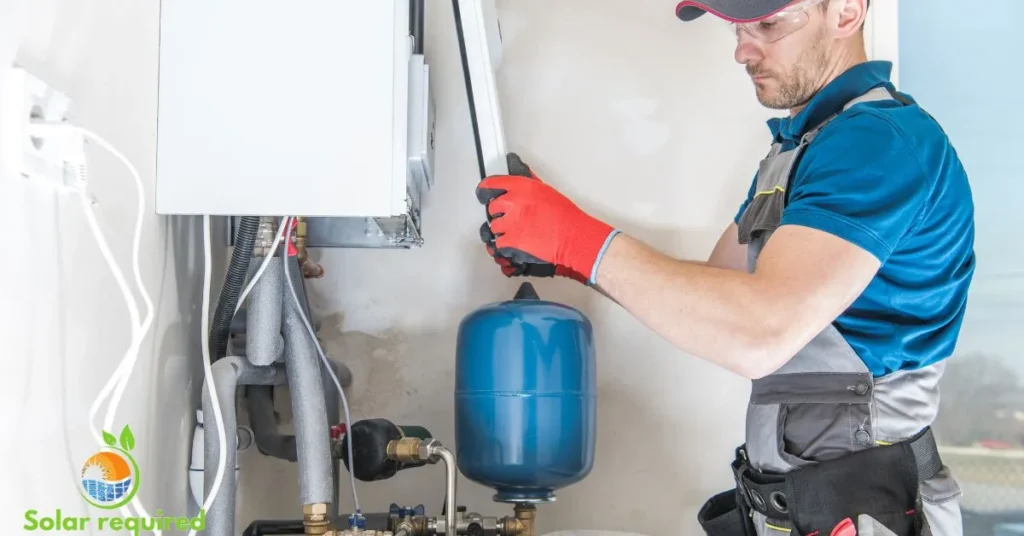
Overcoming Common Concerns
Addressing Myths and Misconceptions
Solar water heating systems offer many advantages. However, some homeowners may have concerns or misconceptions about their viability and practicality. Let’s answer some common questions. Let’s also clear up myths about solar panels and this technology.
Cold or overcast weather prevents solar water heaters from working.
Many climates have sporadic clouds or lower temperatures. They can benefit from solar water heaters. Less-than-ideal weather may slightly reduce the system’s performance. But solar collectors are made to absorb and transform sunlight. They can even turn diffuse sunlight into useful thermal energy. Even in cold or cloudy places, many solar water heating systems can reliably offer hot water throughout the year. This is especially true for those with backup heating sources.
Solar water heaters are costly and take a while to pay for themselves. A solar water heater may cost more upfront than a conventional one. But, over time the savings and environmental benefits usually beat the expenses.
Solar Water Heaters Require Extensive Maintenance
Solar water heaters need little maintenance. They have few moving parts and last 20 to 25 years or more if cared for well. Regular maintenance is key. It involves occasional cleaning of the solar collectors and checking for leaks. That’s all that’s needed to ensure the system works well and lasts.
Solar Water Heaters are Unreliable and can’t provide consistent hot water.
Modern solar water heating systems are designed to give a reliable supply of hot water. They work on cloudy days and during high demand. Many systems have backup heating. They can switch between solar and traditional heating. This ensures a continuous flow of hot water. Also, advanced controls and monitoring systems help optimize the system. They also ensure a reliable hot water supply.
By addressing these common myths and misconceptions, you can make a better choice. You can decide on the value of installing a solar water heater in your home.
Technical and Environmental Challenges
Climate and Weather Dependence
Solar water heaters rely on sunlight to function effectively. In cloudy, rainy, or foggy regions, the system is much less efficient. Also, in cold places, indirect circulation systems are more expensive. They may be needed to prevent freezing.
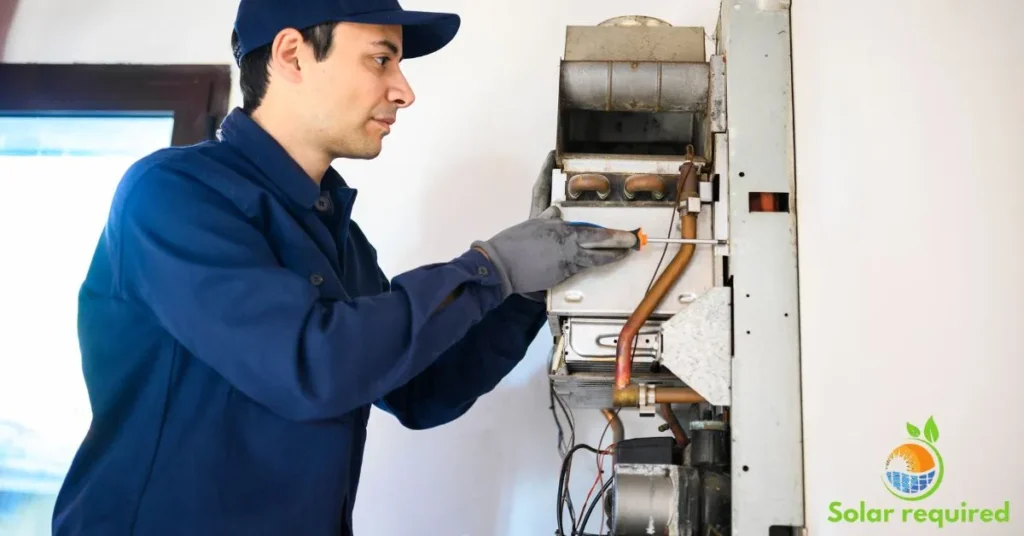
Space Requirements
Solar thermal panels require sufficient roof space for installation. For homes with limited roof space, accommodating the panels can be a challenge. Good planning and assessment of space are key. They ensure that the system can be installed well 3.
In summary
Solar water heaters are becoming a more appealing option for households. They are in a world where energy costs are rising and environmental concerns are growing. This cutting-edge solar technology can help. It is powered by the sun. It can meet your hot water needs. And it does so in a sustainable, cheap, and green way.
You’ve learned the many benefits of solar water heaters from this guide. They include lower energy costs, higher property value, and less carbon impact. You’ve also studied the various kinds of solar water heating systems. This enables you to choose the one that best suits your house’s need for hot water.
Carefully evaluate your home’s solar potential. Size the system to ensure your solar water heater is optimized. This will deliver maximum efficiency and long-term savings. Also, knowing and addressing common concerns and misconceptions can help you make a well-informed decision. It will help you decide whether to embrace this renewable energy.
As you start your journey to a cheaper, greener hot water future, remember: that installing a solar water heater is an investment in your home. It’s also an investment in the environment and your quality of life. Take the plunge and use the power of the sun. You can reap the many rewards of solar water heating. It will set an example for your community and help make the world greener and more energy-efficient.
